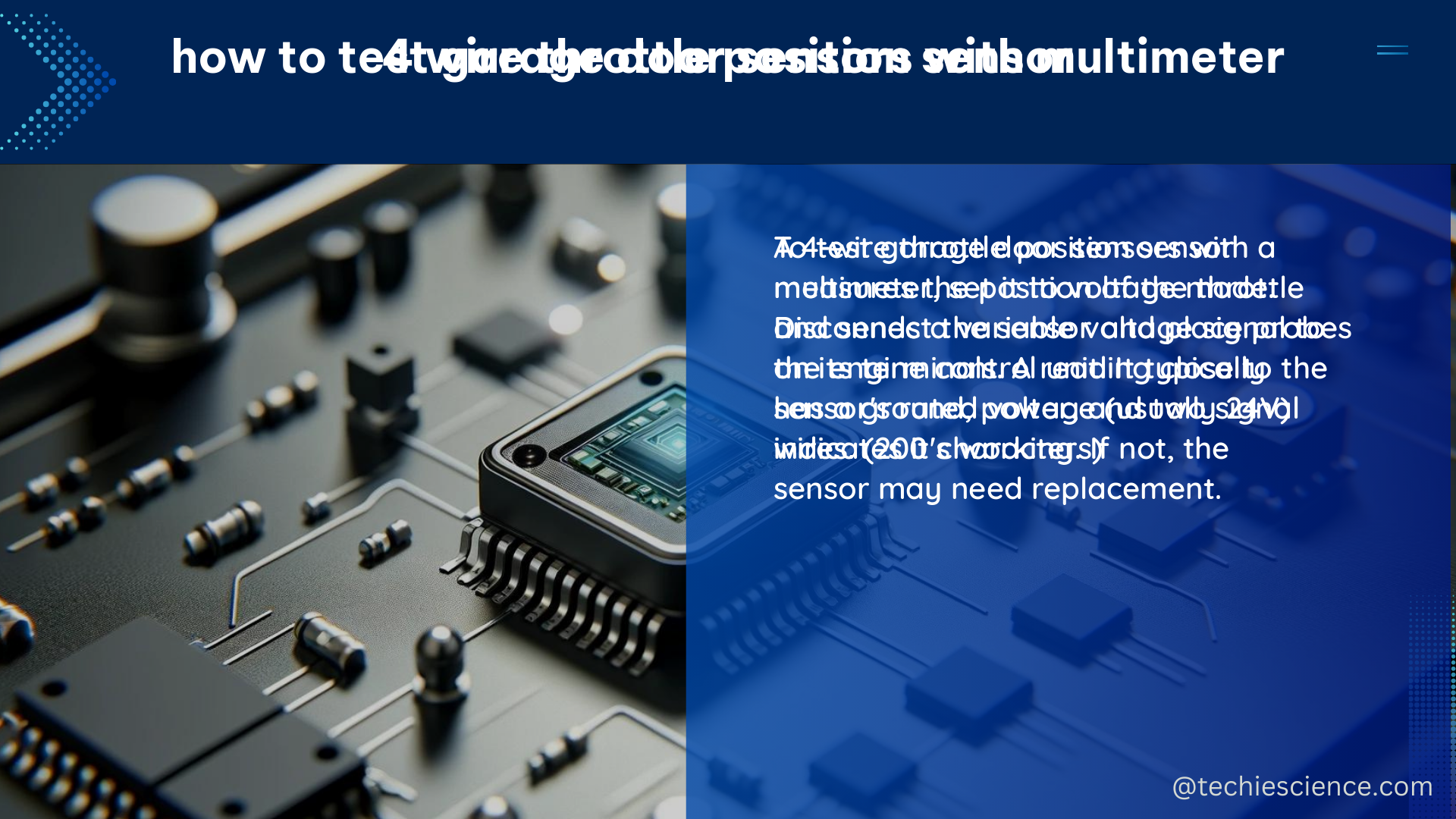The 4-wire throttle position sensor (TPS) is a critical component in modern automotive engines, providing real-time information about the throttle position to the engine control unit (ECU) for optimal fuel injection and engine performance. This sensor consists of a resistive element that changes its resistance value based on the throttle position, allowing the ECU to calculate the throttle position and adjust the engine’s performance accordingly.
Understanding the Technical Specifications of a 4-Wire TPS
- Resistance Value:
- The resistance value of a 4-wire TPS typically ranges from 50 to 500 ohms, depending on the throttle position.
- The resistance value increases as the throttle opens, providing a proportional signal to the ECU.
-
The resistance value is measured using a multimeter, and it should be compared to the manufacturer’s specifications.
-
Voltage:
- The voltage signal from the TPS is typically in the range of 0.5 to 4.5 volts, depending on the throttle position and the resistance value.
- The ECU uses this voltage signal to determine the throttle position, with a higher voltage indicating a more open throttle.
-
The voltage can be measured using a multimeter, and it should be checked against the manufacturer’s specifications.
-
Current:
- The current flowing through the TPS is typically in the range of 1 to 5 milliamps, depending on the resistance value and the voltage signal.
-
The current can be measured using an ammeter, and it should be within the manufacturer’s recommended range.
-
Temperature Range:
- The TPS is designed to operate within a specific temperature range, typically from -40 to 150 degrees Celsius.
-
Exposure to temperatures outside this range can affect the sensor’s performance and accuracy.
-
Accuracy:
- The accuracy of the TPS is typically specified as a percentage of the full-scale output, such as ±2% or ±5%.
-
This means that the sensor’s output will be within the specified percentage of the actual throttle position.
-
Response Time:
- The response time of the TPS is the time it takes for the sensor to respond to a change in the throttle position.
-
This is typically specified in milliseconds, and it should be within the manufacturer’s recommended range.
-
Life Expectancy:
- The life expectancy of the TPS is the expected operating time before failure, typically specified in hours or years.
- Proper maintenance and care can help extend the sensor’s lifespan.
Troubleshooting and Maintenance of a 4-Wire TPS

- Locating the TPS:
-
The TPS is typically located on the throttle body or near the throttle cable, making it easily accessible for inspection and testing.
-
Checking the Connections:
- Ensure that the TPS is properly connected to the ECU and that there are no loose or damaged wires.
-
Check the wiring harness for any signs of wear or damage, and replace it if necessary.
-
Testing the TPS:
- Use a multimeter to test the resistance value and voltage signal of the TPS.
-
Compare these values to the specifications provided by the manufacturer to ensure the sensor is functioning correctly.
-
Checking the Throttle Position:
- Manually move the throttle to different positions and check the resistance value and voltage signal.
-
Ensure that these values change proportionally with the throttle position.
-
Testing the ECU:
- If the TPS is functioning properly, but the ECU is not responding, there may be an issue with the ECU.
-
Use a scan tool to check for any error codes or issues with the ECU.
-
Preventive Maintenance:
- Regularly clean the throttle body and the TPS to prevent buildup of dirt and debris, which can affect the sensor’s performance.
- Check the TPS for any signs of wear or damage, and replace it if necessary.
By understanding the technical specifications and following the troubleshooting and maintenance steps, you can ensure the proper functioning of your 4-wire throttle position sensor and maintain optimal engine performance.
References:
- MIL-STD-881F Standard Practice for Work Breakdown Structures for Defense Materiel Items
- AETC TTP11-1, Employment of the F-15 Eagle in Air-to-Air Combat
- SmartMesh IP Application Notes – Analog Devices
- CONTROL VALVE HANDBOOK | Emerson
- Sensor Technology Handbook – OLLINTEC

The lambdageeks.com Core SME Team is a group of experienced subject matter experts from diverse scientific and technical fields including Physics, Chemistry, Technology,Electronics & Electrical Engineering, Automotive, Mechanical Engineering. Our team collaborates to create high-quality, well-researched articles on a wide range of science and technology topics for the lambdageeks.com website.
All Our Senior SME are having more than 7 Years of experience in the respective fields . They are either Working Industry Professionals or assocaited With different Universities. Refer Our Authors Page to get to know About our Core SMEs.